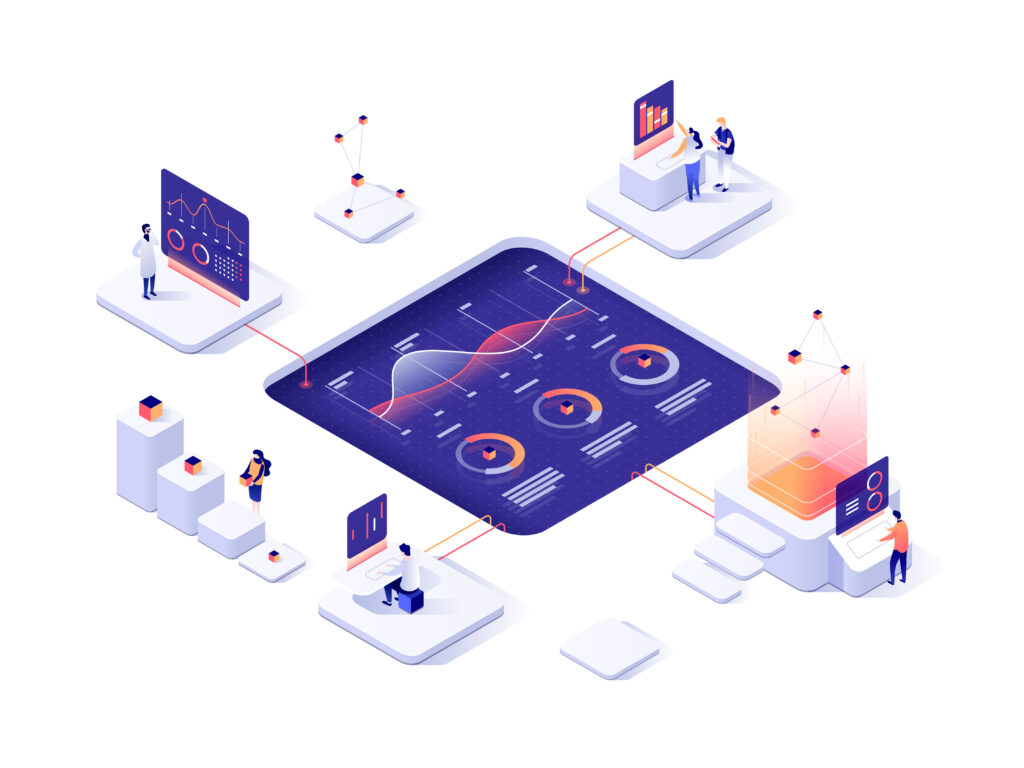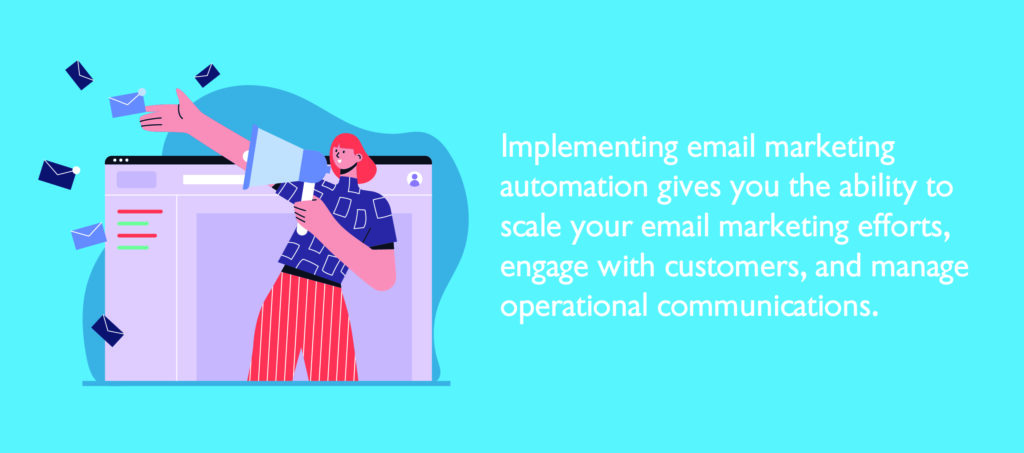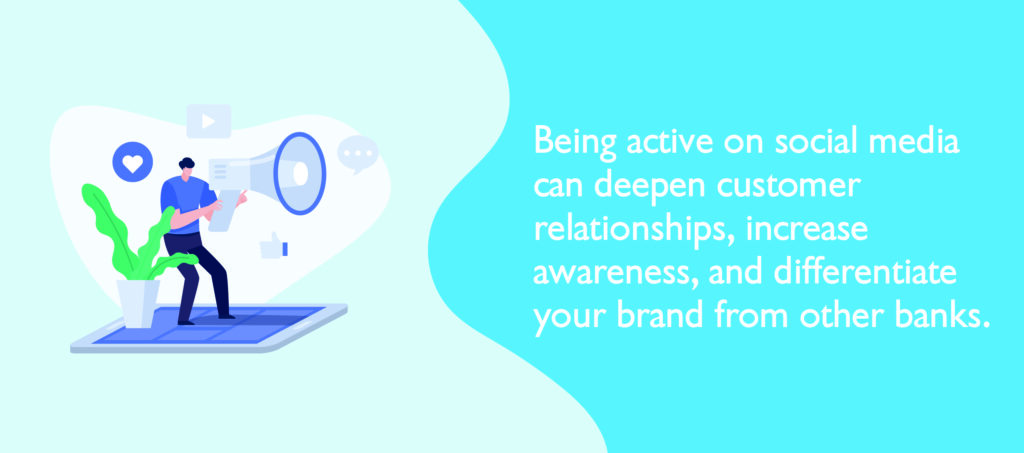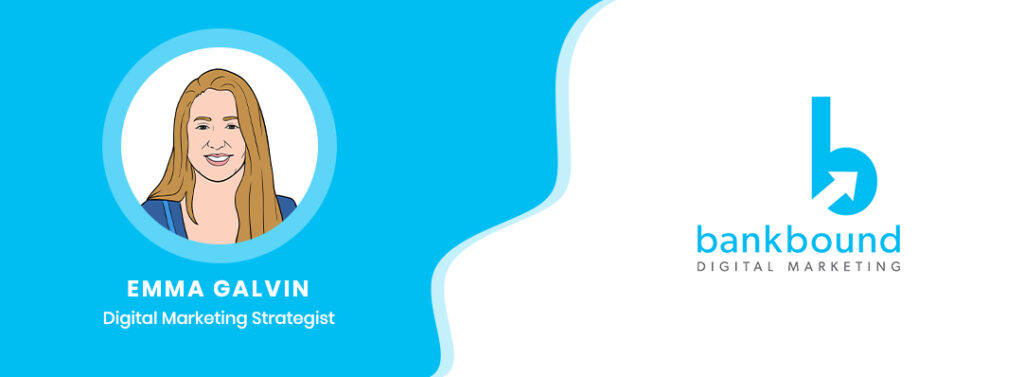Bank Marketing Strategy
Modernizing Your Bank Marketing
With the birth of the Internet, the wave of social media, and the rise of artificial intelligence, marketers have witnessed colossal shifts in their job functions and have been forced to rethink their entire strategy and purpose.
Now, with the internet and social media at our fingertips, consumers have more choices, more perspective, and more buyer power than ever before. This, in turn, has forced marketers to be more competitive and thoughtful in their marketing efforts. Luckily, through the power of technology, today’s marketers can leverage endless amounts of data to constantly improve upon their marketing campaigns and drive better, more tangible results.

Leverage Your Data
In the past, marketers were tasked with the nearly impossible feat of proving to shareholders that their work actually yielded a positive ROI – all without having nearly any data to work off of. Now, the guessing game is over thanks to an endless supply of data that can directly correlate marketing efforts to revenue. Data exposes gaps in performance and uncovers what campaigns are driving the most success. It also allows for personalization in marketing campaigns, which deepens the messaging of the campaign and results in more conversions. Though there are a myriad of methods to leverage your data, there are a few key tips to ensure you are implementing data analytics into your marketing strategy:
Connect Your Website to Google Analytics (GA4)
The most basic, and arguably most important, way to utilize your digital data is connecting your website to Google Analytics (GA4). After placing a single piece of code on your website via Google Tag Manager, you can now analyze all the actions users perform on your site. To take full advantage, add “triggers” based on certain web actions users take (i.e., form submissions, visits to product pages, or visits to the “contact us” page). This enables even further insight into user behaviors. After posting a new blog, updating your product page, or implementing FAQ schema, you can track spikes in website visits and see where improvements are necessary.
Use Data in your PPC Campaign Targeting
Utilizing Audience targeting in PPC advertising platforms such as Google and Facebook is an excellent way to ensure you are reaching the right customers. Taking it a step further, ensuring that your ad creative and copy are customized towards those audiences confirms that your messaging is appealing to those audiences. But you shouldn’t stop there. Two useful ways to use data in PPC campaigns are connecting your Google Ads account with your GA4 account and implementing retargeting campaigns.
- Connecting your GA4 account to your Google ads account is necessary in order to attribute campaigns to conversions. For example, if an individual clicked on your ad, visited your website, and then opened a checking account, you would be able to attribute that ad to that conversion. This provides insight into which ads are performing well and which should be altered or discontinued.
- With retargeting, you can target customers who have been on your website and dropped off somewhere along the way. Your ad will remind past website visitors of your presence. The benefit of implementing this type of targeting is that you are reaching those whom you already know are interested in your product. 99firms reports that the average click through rate (CTR) of a retargeted ad is 10x higher than the CTR of a typical display ad.
Implement Email Marketing Automation
Email marketing automation is a valuable way to interact with potential and existing customers and build strong relationships. In fact, a McKinsey Study shows that email is nearly 40 times more effective in obtaining new customers than social media. Moreover, automated emails, or emails triggered by some type of user action like filling out a form, result in a 152% higher CTR and 70.5% higher open rate than manual emails.
Utilizing merge variables and dynamic content further personalizes each email, leading to better engagement and higher CTRs. Merge variables are text within an email that are auto populated with email recipient data, such as name or job title. This makes the recipient feel they are being personally emailed, and not a part of a generic mass email blast.
Dynamic content achieves something similar by switching out content like images or background based on email recipient data. So, if you know that some recipients are from FL and others are from GA, you may include dynamic content images of each state so that when a recipient from FL receives the email, they will see a different image than GA recipients.

Use Social Media Creatively
The case for prioritizing social media within the banking industry is not obvious – who really follows their local bank on Instagram anyway? While it’s fair to assume most people are not running home to follow their local bank on social media directly after signing up for a checking account, leveraging social media strategically can expand awareness, enhance existing customer relationships and help with website page indexing.
According to the American Bankers Association, about ¼ of banks do not have any plans to utilize social media for responding to complaints, customer service, or recruiting. This is a massive opportunity to differentiate yourself from your competitors who may not be tapping into social media’s full potential. Some ways banks can leverage their social media are:
- Hosting educational webinars about useful topics such as student loans, HELOCs, and retirement savings tips
- Implementing micro-influencer marketing to create brand ambassadors and expand your audience beyond who already follows your page
- Having giveaway contests if users share, like, & tag friends on a post

Choose Purpose-Driven Messaging
Purpose- driven marketing is all the rage in today’s marketing world- and there is a reason for it. Consumers have outsmarted traditional bank marketing campaigns that promise “best in class customer service” and “lowest rates in town.” This has become run-of-the-mill for bank marketing messaging and is no longer unique. Instead, choose messaging that aligns with your brand’s purpose and tells a story that differentiates you from your competition. Ask yourself these questions: How does your bank differ from the rest? How is it serving the community? What is it contributing to the world beyond checking accounts and loans? How is it enhancing the lives of your customers and your community? These answers should guide your messaging for all of your website content, marketing campaigns, and sales pitches.
With all this talk of sharing your purpose, it’s important to beware of “purpose washing.” As stated earlier, consumers are more educated than ever thanks to the world wide web, and they can see through companies who claim to be one thing and act differently. Similarly, it’s important to avoid “greenwashing,” or jumping on the bandwagon of ESG initiatives just for show. The bottom line: Be genuine in your messaging and walk the walk!

BankBound Can Help
At BankBound, we aim to become an extension of your digital marketing team. Our experienced digital marketing strategists can help you level up your digital marketing efforts and utilize the latest and greatest technologies in digital marketing. Contact us to speak to a member of our team and learn more about how BankBound can help you achieve digital marketing success for your bank.


